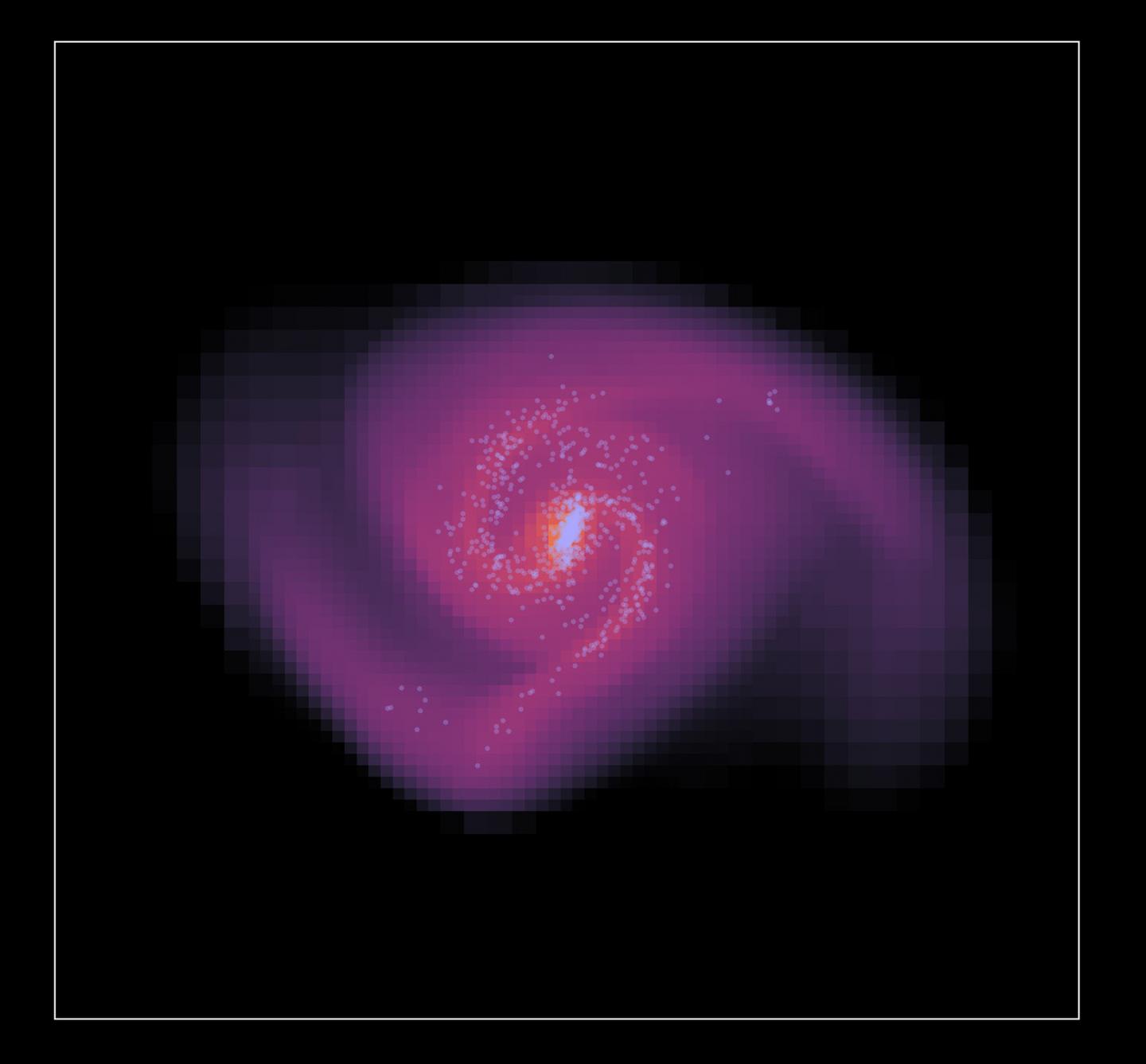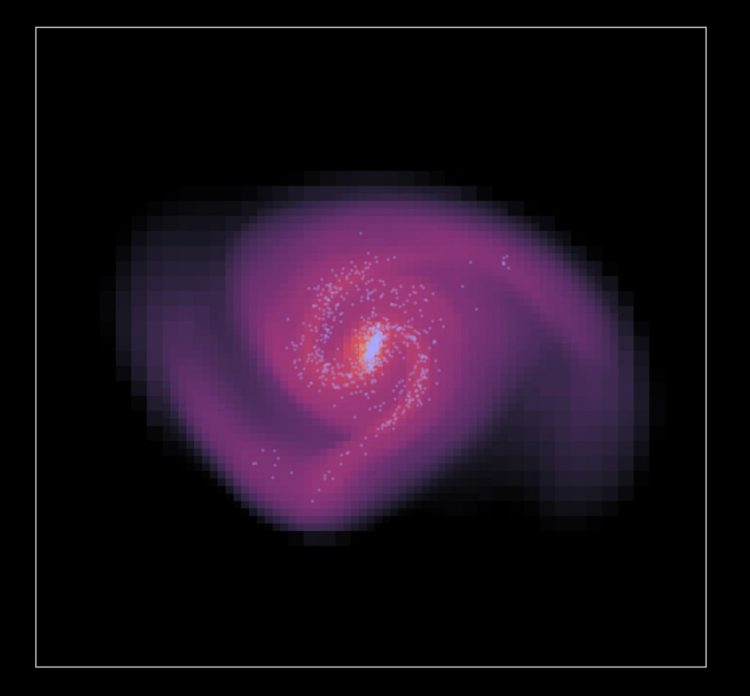A study by the University of Bonn simulates a universe in which Newton’s laws are only valid to a limited extent

Credit: © AG Kroupa/Uni Bonn
For the first time, researchers from the Universities of Bonn and Strasbourg have simulated the formation of galaxies in a universe without dark matter. To replicate this process on the computer, they have instead modified Newton’s laws of gravity. The galaxies that were created in the computer calculations are similar to those we actually see today. According to the scientists, their assumptions could solve many mysteries of modern cosmology. The results are published in the Astrophysical Journal.
Cosmologists nowadays assume that matter was not distributed entirely evenly after the Big Bang. The denser places attracted more and more matter from their surroundings due to their stronger gravitational forces. Over the course of several billion years, these accumulations of gas eventually formed the galaxies we see today.
An important ingredient of this theory is the so-called dark matter. On the one hand, it is said to be responsible for the initial uneven distribution that led to the agglomeration of the gas clouds. It also explains some puzzling observations. For instance, stars in rotating galaxies often move so fast that they should actually be ejected. It appears that there is an additional source of gravity in the galaxies that prevents this – a kind of “star putty” that cannot be seen with telescopes: dark matter.
However, there is still no direct proof of its existence. “Perhaps the gravitational forces themselves simply behave differently than previously thought,” explains Prof. Dr. Pavel Kroupa from the Helmholtz Institute for Radiation and Nuclear Physics at the University of Bonn and the Astronomical Institute of Charles University in Prague. This theory bears the abbreviation MOND (MOdified Newtonian Dynamics); it was discovered by the Israeli physicist Prof. Dr. Mordehai Milgrom. According to the theory, the attraction between two masses obeys Newton’s laws only up to a certain point. Under very low accelerations, as is the case in galaxies, it becomes considerably stronger. This is why galaxies do not break apart as a result of their rotational speed.
Results close to reality
“In cooperation with Dr. Benoit Famaey in Strasbourg, we have now simulated for the first time whether galaxies would form in a MOND universe and if so, which ones,” says Kroupa’s doctoral student Nils Wittenburg. To do this he used a computer program for complex gravitational calculations which was developed in Kroupa’s group. Because with MOND, the attraction of a body depends not only on its own mass, but also on whether other objects are in its vicinity.
The scientists then used this software to simulate the formation of stars and galaxies, starting from a gas cloud several hundred thousand years after the Big Bang. “In many aspects, our results are remarkably close to what we actually observe with telescopes,” explains Kroupa. For instance, the distribution and velocity of the stars in the computer-generated galaxies follow the same pattern that can be seen in the night sky. “Furthermore, our simulation resulted mostly in the formation of rotating disk galaxies like the Milky Way and almost all other large galaxies we know,” says the scientist. “Dark matter simulations, on the other hand, predominantly create galaxies without distinct matter disks – a discrepancy to the observations that is difficult to explain.”
Calculations based on the existence of dark matter are also very sensitive to changes in certain parameters, such as the frequency of supernovae and their effect on the distribution of matter in galaxies. In the MOND simulation, however, these factors hardly played a role.
Yet the recently published results from Bonn, Prague and Strasbourg do not correspond to reality in all points. “Our simulation is only a first step,” emphasizes Kroupa. For example, the scientists have so far only made very simple assumptions about the original distribution of matter and the conditions in the young universe. “We now have to repeat the calculations and include more complex influencing factors. Then we will see if the MOND theory actually explains reality.”
###
Publication: Nils Wittenburg, Pavel Kroupa and Benoit Famaey: The formation of exponential disk galaxies in MOND. Astrophysical Journal, Internet: http://arxiv.
Contact:
Prof. Dr. Pavel Kroupa
Helmholtz Institute for Radiation and Nuclear Physics
University of Bonn
Tel. +49-(0)228/736140 or +49-(0)157-89091309
E-mail: [email protected]
Nils Wittenburg
Helmholtz Institute for Radiation and Nuclear Physics
University of Bonn
Tel: +49-(0)178-5446958
E-mail: [email protected]
Media Contact
Prof. Dr. Pavel Kroupa
[email protected]
49-015-789-091-309





